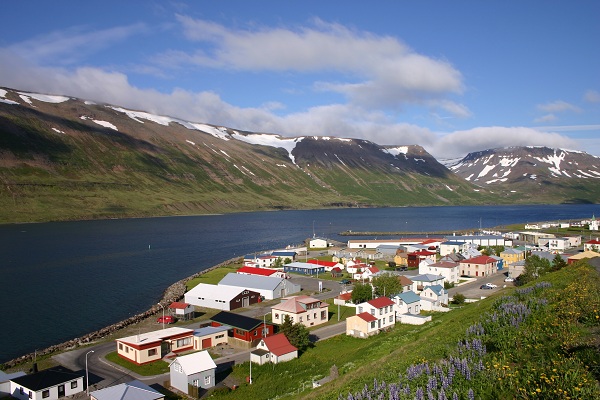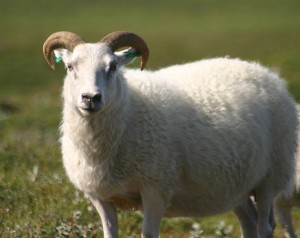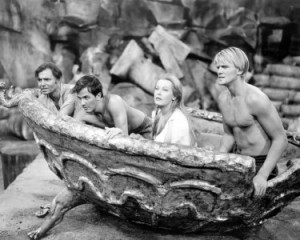In about three weeks, I’ll be landing at Keflavik Airport, in Iceland. While I do have some pre-set appointments, for the most part, I’ll be exploring that interesting country in my usual unplanned, eccentric way. I must cram as much experience as I can into a mere ten days ― not much time, considering how much that country has fascinated me over the years, and how much I’ve read about it. But reading about a place, no matter how thoroughly, is no substitute for walking in it, talking to its people, getting the smell of the air and the lay of the land.
 I usually travel light, carrying only a small backpack which contains a change of clothes, a pup-tent, a few general-purpose tools, some books and notebooks. I’m most interested in how ordinary Icelanders live their lives. As I usually do, I’ll seek out the unspectacular and unofficial, the streets and lanes and bits of country that tourists seldom care about. I always want to see the dark corners, the social problems, the blemishes as much as the admirable and the picturesque. I will try to speak to as many Icelanders as I can, and of every kind ― young and old, rich and poor, town and country, fishermen, farmers, students, business people, academics, anyone. My interests are social, historical, political, and literary, in the main, but film, art, music, natural history, agriculture, fisheries, archaeology, geology and ecology also demand my attention. I am eager to meet experts and enthusiasts in all these subjects. As a former shepherd, I am particularly eager to meet Icelandic sheepmen. It would also be nice to encounter some of the famous Icelandic ponies. Icelandic writers, of course, would be particularly delightful to meet, especially any of the county’s fine mystery writers.
I usually travel light, carrying only a small backpack which contains a change of clothes, a pup-tent, a few general-purpose tools, some books and notebooks. I’m most interested in how ordinary Icelanders live their lives. As I usually do, I’ll seek out the unspectacular and unofficial, the streets and lanes and bits of country that tourists seldom care about. I always want to see the dark corners, the social problems, the blemishes as much as the admirable and the picturesque. I will try to speak to as many Icelanders as I can, and of every kind ― young and old, rich and poor, town and country, fishermen, farmers, students, business people, academics, anyone. My interests are social, historical, political, and literary, in the main, but film, art, music, natural history, agriculture, fisheries, archaeology, geology and ecology also demand my attention. I am eager to meet experts and enthusiasts in all these subjects. As a former shepherd, I am particularly eager to meet Icelandic sheepmen. It would also be nice to encounter some of the famous Icelandic ponies. Icelandic writers, of course, would be particularly delightful to meet, especially any of the county’s fine mystery writers.
Iceland holds some particular interest for a Canadian like myself. The two countries have some unusual links. During the nineteenth century, Icelandic migrants to Canada were granted the special privilege of setting up a “state within a state” in Western Canada. Before it was absorbed into the Province of Manitoba, Icelanders had a self-governing, semi-autonomous “republic” with its own Allthing, modeled on the Icelandic Free State of the Middle Ages. Iceland is the only European country that actually sent a greater number of its emigrants to Canada than to the United States. The town of Gimli, in Manitoba, still preserves many Icelandic traditions. There are about 90,000 Canadians of Icelandic descent ― equal to a quarter of the population of Iceland itself. And of course, Icelanders were the first Europeans known to have set foot on Canadian soil. The first Icelandic-Canadian, Snorri Þorfinnsson, was born a thousand years ago! (almost exactly, if the date of 1012 attested in the Sagas is correct).
My principal area of historical study and writing is the origins of democracy, and small scale democratic institutions. Iceland, with its medieval parliament, looms large in this study. I will of course want to visit the Þingvellir, like any tourist would, but it will have a special import for my studies. Iceland‘s modern constitution is of equal interest to me. The current administration, which emerged after the financial crisis of 2008, deserves some attention. Hopefully, I will meet someone who knows its workings. I‘ve read much about the causes and results of that financial crisis, and this, too, must be explored in situ.
While much of my time will doubtless be spent in Reykjavík, I’ll try to get out into the country as much as possible. My hitch-hiking thumb, much used over the years, is always ready to bring me to some new adventures. Which reminds me: to qualify as a certifiable life of adventure, it must include some contact with a live volcano. My childhood imagination put great stock in volcanos, along with dinosaurs, empty dune deserts, and outer space. Molten lava is just one of those things I expected to encounter in a well-lived grown-up life, and Iceland offers the opportunity of making that come out right.
My older brother tells me that my fascination with paleontology began when, as a child, I was terrified by the dinosaurs in the film Journey to the Center of the Earth. In that film, I probably first heard the Icelandic language spoken, by the character Hans (portrayed by Pétur Rögnvaldsson) who was much more interesting than the dimwitted hero played by Pat Boone. Along with James Mason and Arlene Dahl, they descend into the crater of Snæfellsjökull, and find their way to the “center of the Earth” amid much Hollywood confusion about how the world is structured. The original Jules Verne novel used nineteenth-century science, but Verne did not make such absurd goofs. The book was a favourite of my early reading in French. With its prominent place in my childhood mental furniture, I would love to visit Snæfellsjökull.
So, the mask of my official purpose, all very serious and academic, comes away. My motive for the trip is really pure fun. The countdown begins to another adventure.


0 Comments.